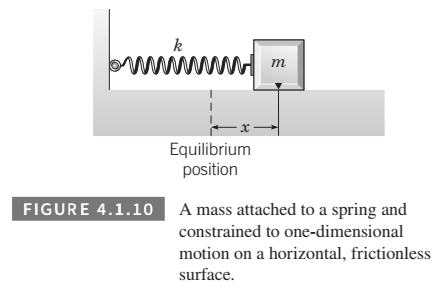
Concept explainers
Use the differential equation derived in Problem 19 of section 4.1 to determine the period of vertical oscillations of a cubic block floating in a fluid under the stated conditions.
Problem 19, Section 4.1

Duffing’s Equation
For the spring-mass system shown in Figure
Find the linearized equation for the differential equationderived in part (a) under the assumption that, in its dynamicstate, the maximum displacement of the mass from its equilibrium position is small.
Want to see the full answer?
Check out a sample textbook solution
Chapter 4 Solutions
Differential Equations: An Introduction To Modern Methods And Applications 3e Binder Ready Version + Wileyplus Registration Card
Additional Math Textbook Solutions
A First Course in Probability (10th Edition)
STATISTICS F/BUSINESS+ECONOMICS-TEXT
University Calculus: Early Transcendentals (4th Edition)
Algebra and Trigonometry (6th Edition)
Elementary Statistics: Picturing the World (7th Edition)
Pre-Algebra Student Edition
- Find xyz cordinates of center of gravity given z = 3.47 inarrow_forwardThe graph of f', the derivative of f, is shown in the graph below. If f(-9) = -5, what is the value of f(-1)? y 87 19 6 LO 5 4 3 1 Graph of f' x -10 -9 -8 -7 -6 -5 -4 -3 -2 -1 1 2 3 4 5 6 7 8 9 10 -1 -2 -3 -4 -5 -6 -7 -8 564%arrow_forwardFind the geometric center of shapearrow_forward
 Discrete Mathematics and Its Applications ( 8th I...MathISBN:9781259676512Author:Kenneth H RosenPublisher:McGraw-Hill Education
Discrete Mathematics and Its Applications ( 8th I...MathISBN:9781259676512Author:Kenneth H RosenPublisher:McGraw-Hill Education Mathematics for Elementary Teachers with Activiti...MathISBN:9780134392790Author:Beckmann, SybillaPublisher:PEARSON
Mathematics for Elementary Teachers with Activiti...MathISBN:9780134392790Author:Beckmann, SybillaPublisher:PEARSON
 Thinking Mathematically (7th Edition)MathISBN:9780134683713Author:Robert F. BlitzerPublisher:PEARSON
Thinking Mathematically (7th Edition)MathISBN:9780134683713Author:Robert F. BlitzerPublisher:PEARSON Discrete Mathematics With ApplicationsMathISBN:9781337694193Author:EPP, Susanna S.Publisher:Cengage Learning,
Discrete Mathematics With ApplicationsMathISBN:9781337694193Author:EPP, Susanna S.Publisher:Cengage Learning, Pathways To Math Literacy (looseleaf)MathISBN:9781259985607Author:David Sobecki Professor, Brian A. MercerPublisher:McGraw-Hill Education
Pathways To Math Literacy (looseleaf)MathISBN:9781259985607Author:David Sobecki Professor, Brian A. MercerPublisher:McGraw-Hill Education





